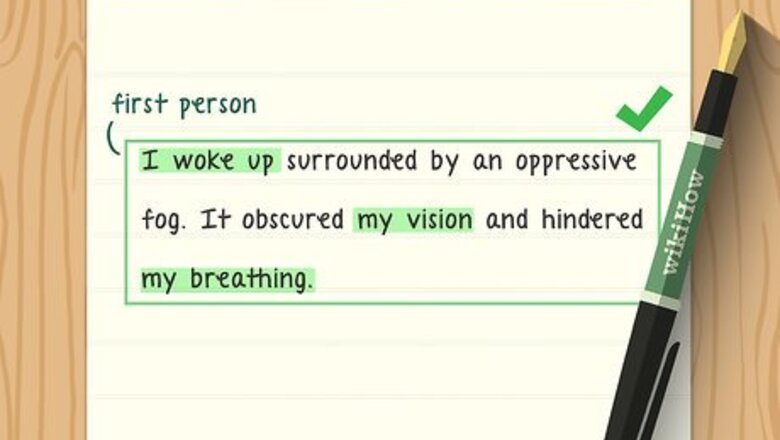
views
Introducing Your Story
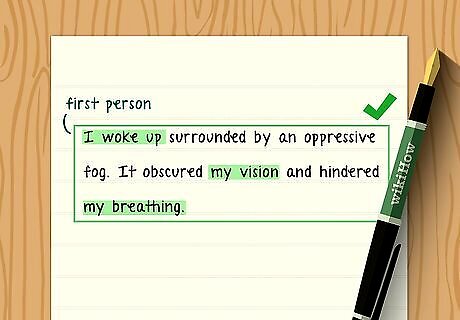
Plan to tell your narrative from the first or third person perspective. Use "I," "he," "she," "it," or "they" as the subject to tell your story. While narrative paragraphs are most often told from the first person perspective—relating a story that happened to you—they can also be told from a third person perspective. You could relate something that happened to someone else, even a fictional person.
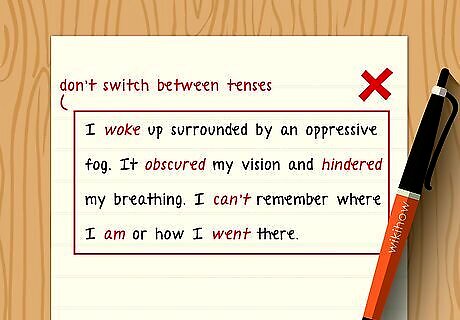
Use a consistent tense. Refer to the prompt or guidelines for the assignment, if applicable, to determine which tense you should use. If there are none, you can choose either past or present tense. Just be sure to use 1 tense consistently throughout the entire paragraph, and avoid switching between tenses. The exception would be if you were switching between the current discussion of the story’s meaning (in present tense) and the narrative of the story’s events (past tense).

Create an engaging topic sentence. Draw the reader into your narrative paragraph by creating excitement or suspense with your opening sentence. This sentence should introduce the purpose of the paragraph—the story—and make the reader want to read further. A good first-person topic sentence might be, “I’ll never forget the time I picked out my new puppy.” If you were using third person, the same topic sentence would be written, “He would never forget the time he picked out his new puppy.”

Present any major characters involved in the story. Introduce any people who will play an important role in the story so the reader understands who is a part of the narrative. You don’t need to introduce every character you will talk about, but it’s helpful to introduce people who advance the action. For the first-person example about picking out a new puppy, you might continue, “My mom drove me to the breeder, which was 45 minutes away.”

Set the scene of the story. Provide a setting for your story and orient your reader to the time your story happens. This helps them place themselves in the narrator’s shoes and understand their state of mind for the events. You might say: “I was 11, so the car ride seemed like an eternity. We lived in Wisconsin at the time, and the breeder was in Chicago.” All background information after the topic sentence, such as other characters and where the story takes place, should be approximately 1-4 sentences long.

Plan to write a narrative paragraph of at least 9 sentences. Write 1 topic sentence, 1-4 sentences of background information, 2-4 sentences to start the story, 3-5 sentences to present the conflict, 1-3 sentences to resolve the conflict, and 1-2 sentences to provide a conclusion. While the length of your paragraph will vary based on the content, a standard 5-sentence paragraph likely will not provide enough detail to tell a complete narrative.
Providing Narrative Details
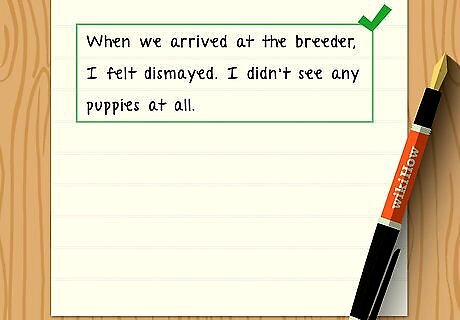
Present the story chronologically from its beginning. Start the story by describing the problem or idea that kicks off the action. It could be anything from a telephone call to a desire for some milk. This start to the story should be 1-4 sentences. You could say, ”When we arrived at the breeder, I felt dismayed. I didn’t see any puppies at all.”

Relate the central conflict of the story. Add narrative detail to explain what happens next in the story. Over 3-5 sentences, this should rise to a central point of drama or conflict. You might continue, ”The breeder whistled. I was relieved when the puppies bounded around a corner and into the entryway. I saw a puppy in my favorite color—white—with two black spots. ‘Mom, can we keep him?’ I asked hopefully. She paused for a minute, seeming to reconsider getting a puppy at all.”

Provide resolution to the story. Detail for the reader how the story ends. In a good story, often this ending will be a surprise twist or simply a happy moment. If there were any special consequences for the narrator, relate those as well. You could end, “Then, mom smiled. ‘Only if we can name him Oreo.’ I hugged her, and Oreo gave me a lick of approval.” Resolution could be as brief as 1 sentence or as many as 3.
Concluding Your Story and Proofing Your Paragraph
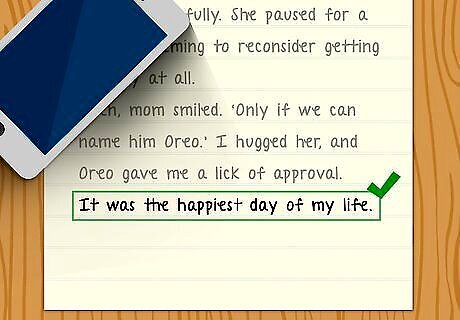
End the story with a conclusion that reflects on the event. Use your conclusion to give an opinion regarding the story. It might give insight into how the event affects the narrator (perhaps you) in the present day or how it affected choices the narrator made since that event. Typically this is 1-2 sentences long. Regarding the puppy story, you might say, ”It was the happiest day of my life.” The nature of your conclusion will depend greatly on the tone and content of your story as well as the perspective the story is told from.
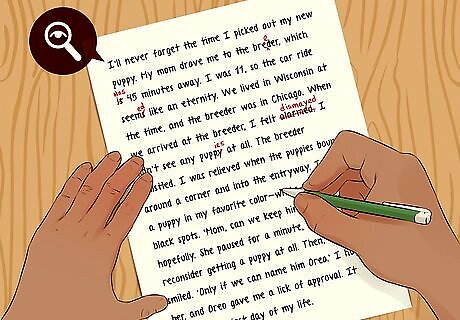
Proofread your paragraph for spelling and grammar issues. Look over your paragraph to make sure it is readable and doesn’t have typos or grammar mistakes. Print out a hard copy of your paragraph rather than trying to edit it on the computer. Reading your story out loud is a great way to listen for grammar problems and other spots that don’t quite flow. Don’t rely on spell-check, as it won’t catch everything! Once you've finished proofreading, consider asking someone you trust to read over the paragraph again. They can help you find anything you may have missed!

Reread your paragraph to make sure the story stands on its own. Give your paragraph a final read to make sure the story makes sense. If someone walked up to you and told you this story, would you need additional information? If so, provide any additional details necessary to comprehend the story easily.




















Comments
0 comment